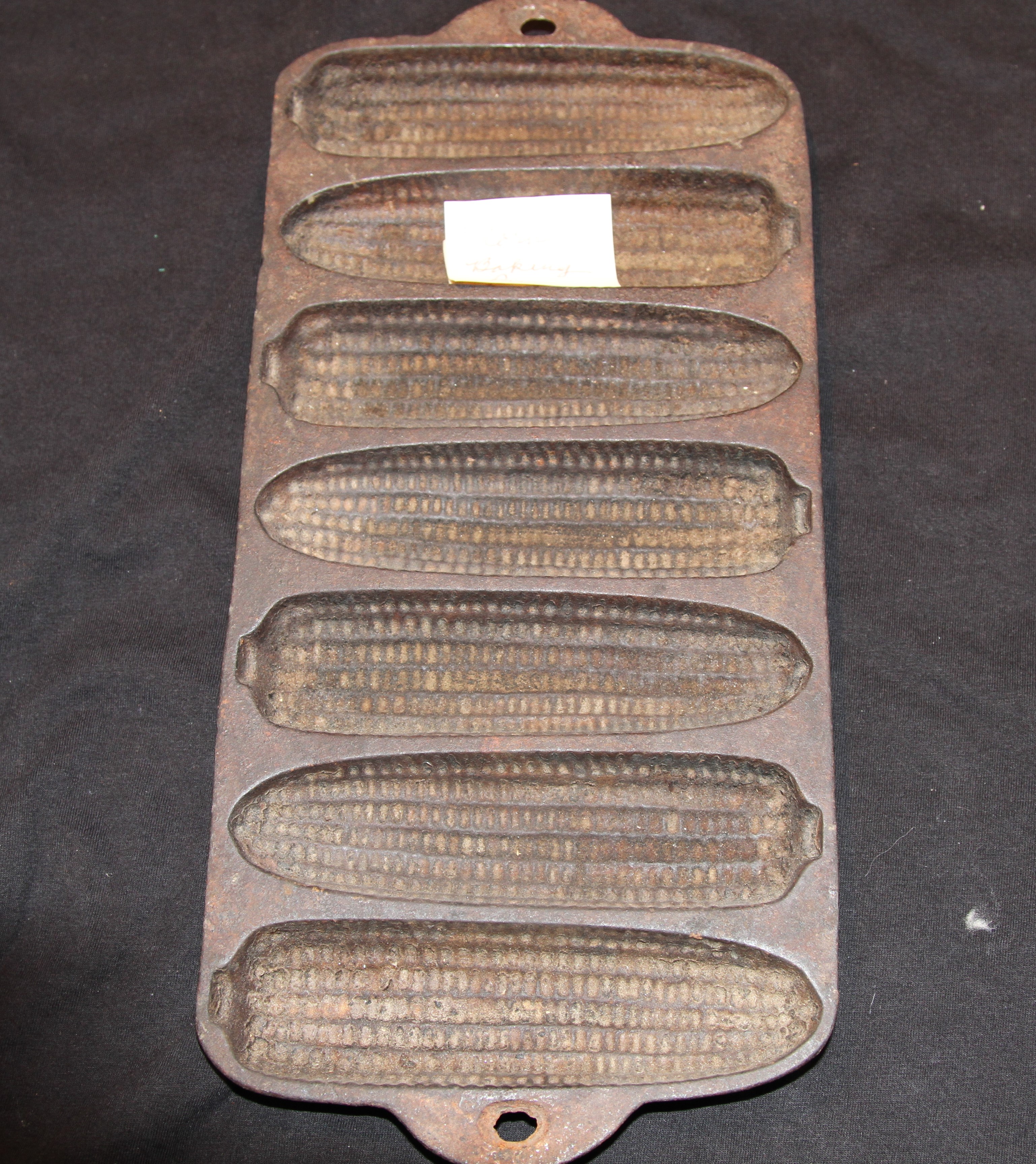Historic Tools of North Castle
Cast Iron Baking Pans – Corn Mold Shaped (2)
These items at Smith’s Tavern are two cast iron baking pans - corn mold-shaped.
Since the founding of the country, Americans have and continue to prize cast iron cookware. Cast iron naturally possesses different qualities from other metals, like aluminium or copper, but mainly heat capacity, heat emissivity and conducting properties.
Heat capacity is the specific heat, the amount of energy required to change the temperature of the metal, multiplied by the mass of the metal. Given the specific heat and the large mass, cast iron cookware possesses a larger heat capacity than copper and aluminum nonstick pans. This means that while it takes a while to heat up, once heated, it will not easily cool down, making it perfect for high-heat applications such as searing.
Heat emissivity is the amount of energy released in the form of thermal radiation. Something with low heat emissivity, like polished stainless steel, have very low emissivity measurements meaning only the foods in contact with the pan are cooked. The dark surface of cast iron allows for high heat emissivity, where even the foods not in direct contact with the pan get cooked.
Thermal conductivity is the metals ability to transfer, or conduct, heat. Compared to aluminium and copper, cast iron is a very poor conductor. This means that while other pans may heat up relatively even, the cast iron will develop hot spots in the middle and remain cool for much longer around the edges. To get around this, cast iron was pre-heated.
The corn mold shaped pans were used to bake the ears of corn.
Reference: https://stacylynharris.com/cast-iron-kitchenware-history-advantages-selection-kitchen-icon/
Catalog Items:
Item #1
| Location: | Panel 2 |
|---|---|
| Length: | 33 cm |
| Width: | 15 cm |
| Weight: | 1752 g |

